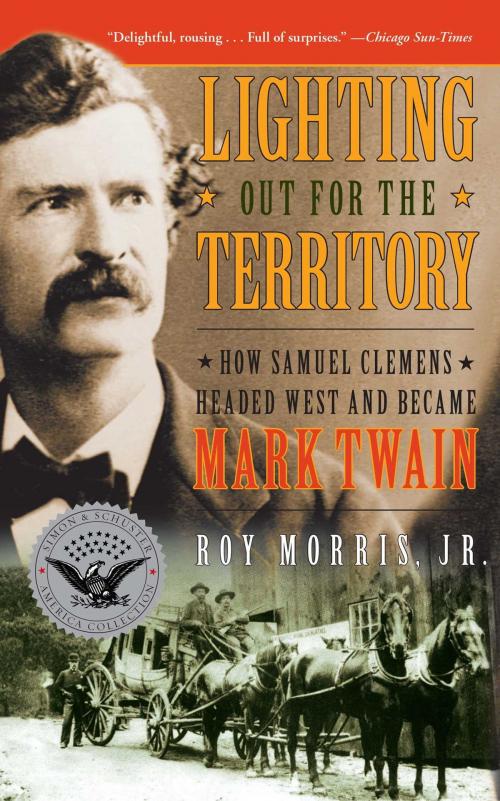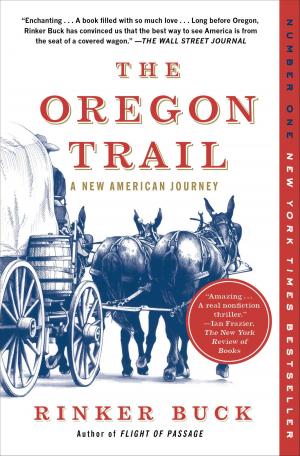Lighting Out for the Territory
How Samuel Clemens Headed West and Became Mark Twain
Biography & Memoir, Literary, Nonfiction, History, Americas, United States| Author: | Roy Jr. Morris | ISBN: | 9781439101377 |
| Publisher: | Simon & Schuster | Publication: | March 2, 2010 |
| Imprint: | Simon & Schuster | Language: | English |
| Author: | Roy Jr. Morris |
| ISBN: | 9781439101377 |
| Publisher: | Simon & Schuster |
| Publication: | March 2, 2010 |
| Imprint: | Simon & Schuster |
| Language: | English |
In the very last paragraph of Mark Twain’s Adventures of Huckleberry Finn, the title character gloomily reckons that it’s time “to light out for the Territory ahead of the rest.” Tom Sawyer’s Aunt Sally is trying to “sivilize” him, and Huck Finn can’t stand it—he’s been there before.
It’s a decision Huck’s creator already had made, albeit for somewhat different reasons, a quarter of a century earlier. He wasn’t even Mark Twain then, but as Huck might have said, “That ain’t no matter.” With the Civil War spreading across his native Missouri, twenty-five-year-old Samuel Clemens, suddenly out of work as a Mississippi riverboat pilot, gladly accepted his brother Orion’s offer to join him in Nevada Territory, far from the crimsoned battlefields of war.
A rollicking, hilarious stagecoach journey across the Great Plains and over the Rocky Mountains was just the beginning of a nearly six-year-long odyssey that took Samuel Clemens from St. Joseph, Missouri, to Hawaii, with lengthy stopovers in Virginia City, Nevada, and San Francisco. By the time it was over, he would find himself reborn as Mark Twain, America’s best-loved, most influential writer. The “trouble,” as he famously promised, had begun.
With a pitch-perfect blend of appreciative humor and critical authority, acclaimed literary biographer Roy Morris, Jr., sheds new light on this crucial but still largely unexamined period in Mark Twain’s life. Morris carefully sorts fact from fiction—never an easy task when dealing with Twain—to tell the story of a young genius finding his voice in the ramshackle mining camps, boomtowns, and newspaper offices of the wild and woolly West, while the Civil War rages half a continent away.
With the frequent help of Twain’s own words, Morris follows his subject on a winding journey of selfdiscovery filled with high adventure and low comedy, as Clemens/Twain dodges Indians and gunfighters, receives marriage advice from Brigham Young, burns down a mountain with a frying pan, gets claim-jumped by rival miners, narrowly avoids fighting a duel, hikes across the floor of an active volcano, becomes one of the first white men to try the ancient Hawaiian sport of surfing, and writes his first great literary success, “The Celebrated Jumping Frog of Calaveras County.”
Lighting Out for the Territory is a fascinating, even inspiring, account of how an unemployed riverboat pilot, would-be Confederate guerrilla, failed prospector, neophyte newspaper reporter, and parttime San Francisco aesthete reinvented himself as America’s most famous and beloved writer. It’s a good story, and mostly true—with some stretchers thrown in for good measure.
In the very last paragraph of Mark Twain’s Adventures of Huckleberry Finn, the title character gloomily reckons that it’s time “to light out for the Territory ahead of the rest.” Tom Sawyer’s Aunt Sally is trying to “sivilize” him, and Huck Finn can’t stand it—he’s been there before.
It’s a decision Huck’s creator already had made, albeit for somewhat different reasons, a quarter of a century earlier. He wasn’t even Mark Twain then, but as Huck might have said, “That ain’t no matter.” With the Civil War spreading across his native Missouri, twenty-five-year-old Samuel Clemens, suddenly out of work as a Mississippi riverboat pilot, gladly accepted his brother Orion’s offer to join him in Nevada Territory, far from the crimsoned battlefields of war.
A rollicking, hilarious stagecoach journey across the Great Plains and over the Rocky Mountains was just the beginning of a nearly six-year-long odyssey that took Samuel Clemens from St. Joseph, Missouri, to Hawaii, with lengthy stopovers in Virginia City, Nevada, and San Francisco. By the time it was over, he would find himself reborn as Mark Twain, America’s best-loved, most influential writer. The “trouble,” as he famously promised, had begun.
With a pitch-perfect blend of appreciative humor and critical authority, acclaimed literary biographer Roy Morris, Jr., sheds new light on this crucial but still largely unexamined period in Mark Twain’s life. Morris carefully sorts fact from fiction—never an easy task when dealing with Twain—to tell the story of a young genius finding his voice in the ramshackle mining camps, boomtowns, and newspaper offices of the wild and woolly West, while the Civil War rages half a continent away.
With the frequent help of Twain’s own words, Morris follows his subject on a winding journey of selfdiscovery filled with high adventure and low comedy, as Clemens/Twain dodges Indians and gunfighters, receives marriage advice from Brigham Young, burns down a mountain with a frying pan, gets claim-jumped by rival miners, narrowly avoids fighting a duel, hikes across the floor of an active volcano, becomes one of the first white men to try the ancient Hawaiian sport of surfing, and writes his first great literary success, “The Celebrated Jumping Frog of Calaveras County.”
Lighting Out for the Territory is a fascinating, even inspiring, account of how an unemployed riverboat pilot, would-be Confederate guerrilla, failed prospector, neophyte newspaper reporter, and parttime San Francisco aesthete reinvented himself as America’s most famous and beloved writer. It’s a good story, and mostly true—with some stretchers thrown in for good measure.















